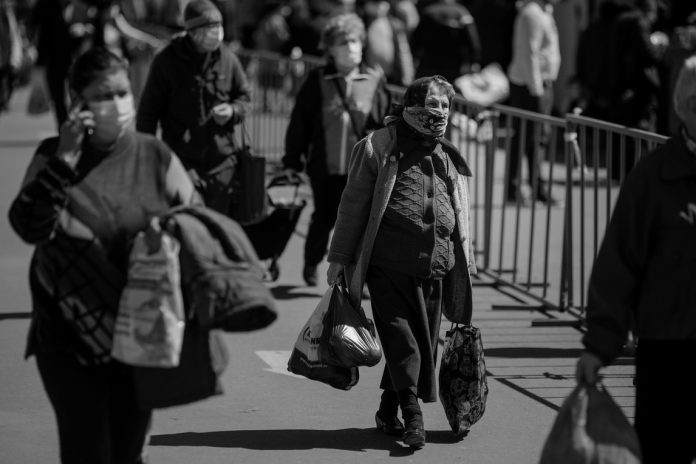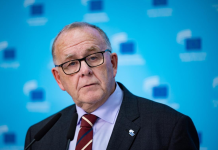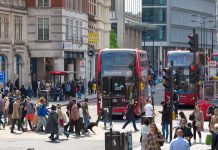Chris Clarke, Policy Researcher at HOPE not hate, explains how COVID impacts community resilience – especially when it comes to far right politics
How will social cohesion be affected by the pandemic? Has the coronavirus drawn people towards divisive narratives and far right politics, or driven them away from these ideas? Are people more positive about change and difference or less – after to 18 months of lockdowns and social distancing?
The answers to these questions are not obvious. The strengthening of social capital in some places was an unexpected silver lining of COVID-19, with many communities coming together and supporting each other through the crisis. Yet in some places, the spread of misinformation and conspiracies throughout the pandemic enabled a culture of blame and scapegoating.
The link between community resilience and COVID
At HOPE not hate we set out to examine the link between community resilience and the impact of the coronavirus outbreak in our new report, ‘Resilient Communities after COVID’. We look at where local authorities experienced increased economic pressures, and where this might be likely to exacerbate community tensions, post-pandemic.
In times of economic hardship, community relations become more fragile. As we have seen time and time again, hardship can brew resentments and frustrations which can be exploited by those who seek to divide. Immigration and growing diversity have become totemic emblems for the many grievances people feel Britain. Our research has consistently found that communities with the greatest anxiety to immigration and multiculturalism are also the ones which have suffered through economic decline, have weak civic, social and economic infrastructure, and feel most distance from power.
“In times of economic hardship, community relations become more fragile.”
As part of the ‘Resilient Communities after COVID’ analysis, we engaged with stakeholders and local leaders in the higher risk areas identified. We talked about expectations for social cohesion post-coronavirus, but also about community resilience during the pandemic.
So, how did COVID change communities across the UK?
One of the most interesting things to emerge was the massive polarity in how different neighbourhoods had responded. There was no uniform trend. Community leaders and council workers described a real strengthening of community bonds in some of their wards and postcodes – with mutual aid groups forming, food parcels being delivered and new social support networks evolving. But just a mile or two away it was often the opposite story, with anti-vax conspiracy theories daubed on fences and local online message boards rife with racist rumours.
A particularly troubling dynamic seemed to emerge when there were different types of neighbourhoods within an authority; diverse and densely-populated postcodes or ‘townships’, where virus R-rates were often high, and deprived, majority-white British populated estates a few miles away. The latter were hearing about the spread of the virus at a stage removed, creating a vacuum for hatred and misinformation.
The Sky News economics correspondent Ed Conway predicted, before Christmas, that we would see what he called a ‘hand-shaped’ recession, once furlough lifted and the vaccine was rolled out. Unlike during the post-2008 downturn, where the economic impact was more universal, Conway suggested that the impact of COVID-19 would be highly unpredictable; increased prosperity for some groups, but huge and often unexpected challenges for others.
A ‘hand-shaped’ pattern of cohesion
In many ways, our research suggests, the impact of the virus on cohesion has followed a ‘hand-shaped’ pattern. Some communities have been brought together by the crisis, and have been net beneficiaries when it comes to local resilience. But many others have seen challenges increase, with some communities becoming much more suspicious of change and difference, creating more fertile turf for far right narratives.
Our qualitative research with stakeholders found that it was often in neighbourhoods where social infrastructure is most sparse that cohesion was worst affected by the pandemic. These tended to be places without the high levels of civic engagement which better-off communities often have, and with few trusted voluntary and faith institutions.
The relationship between trust and community infrastructure was clear, here. One local decision-maker put this succinctly: “You talk to an individual in [one of the less resilient] places and they say, ‘We don’t trust our councillor, so we’ll never go to them. We don’t have any relationship with our local church, so we don’t go to them’. So who do they go to? They don’t go to anyone other than social media, which results in misinformation.”
‘Building back better’ needs to acknowledge social fabric
What these findings suggest is that life under lockdown had a sort of ‘Matthew Effect’ on cohesion – creating additional resilience in areas where social capital was already strong, and undermining it in places where it was weaker. This picture is a worrying one: ‘Clapping for carers’ and rainbow drawings in support of the NHS on one street, but islamophobic Facebook comments and conspiracy theorist graffiti on the next.
If the government is serious about ‘building back better’ when it comes to community resilience, is must recognise the role which strong social fabric played in supporting the communities which stepped up to the crisis. And it must make a clear commitment to invest in the community infrastructure in those which responded less well, so that they are better equipped in the future.
Whether through third sector funding in these places or through long-term, ring-fenced spending for cohesion projects and personnel, the government now has a chance to come good on its rhetoric and ‘level up’ social cohesion.











